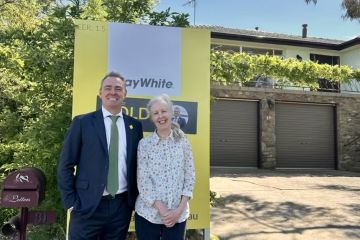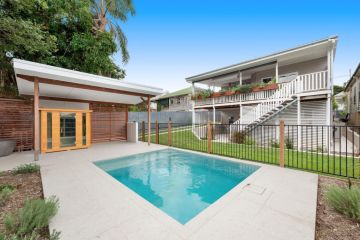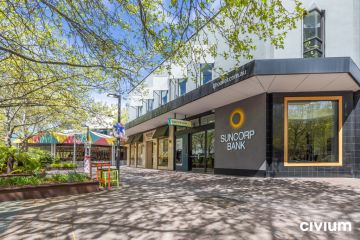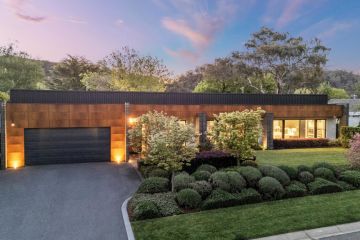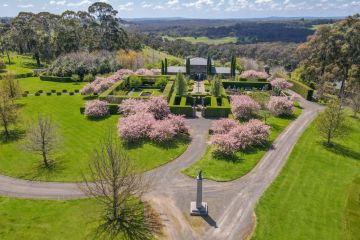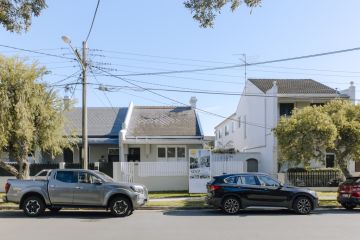Escape to Lochiel, South Australia: Great for crowds and pink lake pics for the socials
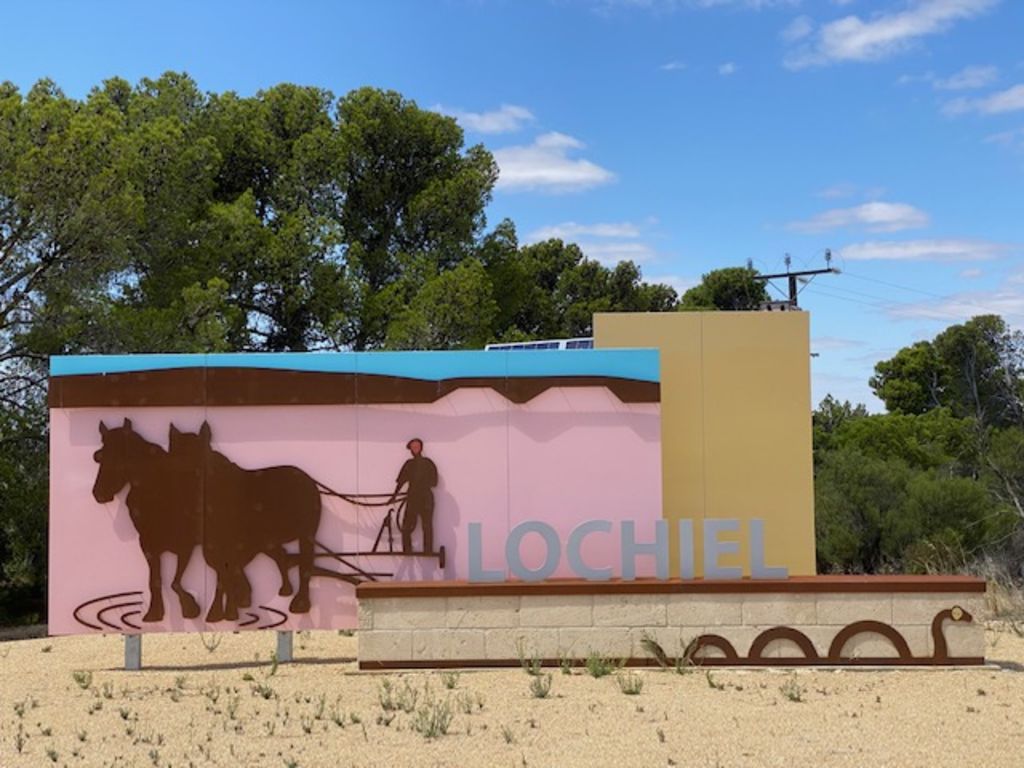
Chances are you’ve never heard of the small Aussie town with a mythical monster stuck in the middle of a pink lake. But, odds are, you will soon.
Lochiel, a roadside town 1.5 hours north of Adelaide, is warming to its new-found popularity. For years it has been little more than a pit-stop on the way from Adelaide up to Port Augusta or Port Pirie — a place to stretch the legs, refuel and grab a cuppa.
But now Lochiel is a tourism destination in its own right, and day trippers have started rocking up by the bus load.
The central focus is Lake Bumbunga, simply referred to as “the pink lake”. The high salinity levels in the lake react with algae to create different shades of pink — hot pink or pastel pink depending on the salt, weather and time of day.
There are a handful of pink lakes across Australia, mostly in South Australia and Western Australia. But Lake Bumbunga is the most accessible and arguably the most photogenic.
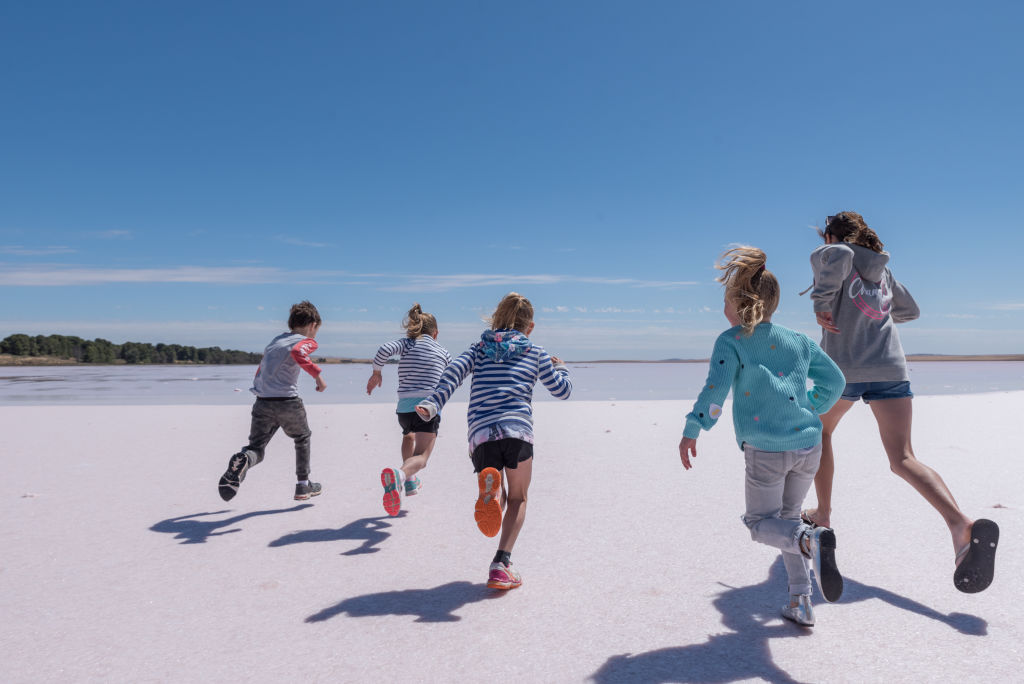
The lake is particularly popular with tourists, who enjoy walking on to the lake to take selfies, and people taking aerial photos with drones.
All of this new attention has inspired a flurry of activity, including the replacement of Lochiel’s famous Lochiel Ness Monster or Loch Eel. The original Loch Eel was built in the middle of the lake with a series of old tyres and jokingly referred to as Loch Ness’ cousin. It all harks back to the town’s namesake — a forest in northern Scotland.
Locals were furious when the head of the monster was stolen in 2017. It has remained headless ever since, but a sculptor is currently working on an new Loch Eel made of tough fibreglass to grace the pink shores of the lake.
Wakefield Regional Council is waiting on final approval from the owners of the lake, Hong Kong-based Cheetham Salt, and installation is expected this year.
Population: 113 as of 2016 census.
Who lives there?
If you want the lowdown on all things Lochiel, it’s John Nicholls you’re looking for. With the exception of “a few misspent youth years”, Nicholls, 65, has lived in the town all of his life.
“You tend to grow up where home is,” he explained.
“This is my home, this is where I was brought up. I’d suggest it’s the same with others who have been here for generations.”
Nicholls and wife Kathy raised their four kids in Lochiel, making them the sixth generation of the Nicholls clan.
The couple also co-ordinated the 2019 celebrations of Lochiel’s 150th year. The town hosted free public events and a reunion of old and new locals that attracted people from interstate and overseas.
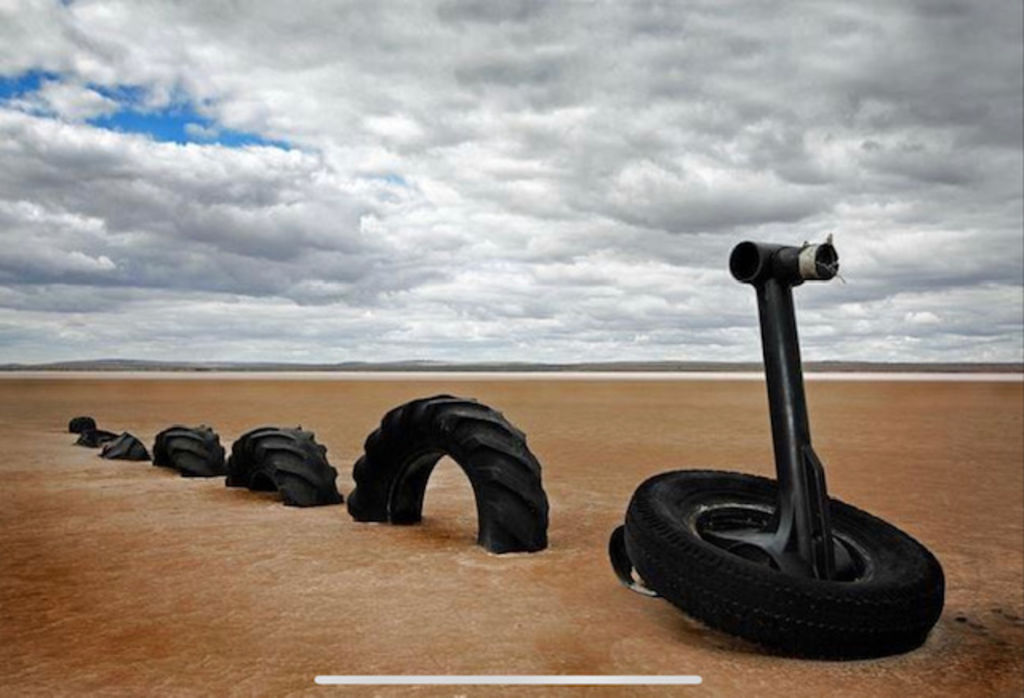
“We set up a history display in the hall, had tea at the community centre on the oval on the Saturday night,” Nicholls said.
“The Sunday was when we got together as a group, there was a church service where our church was absolutely chock-a-block full. Then we had a free lunch at the oval with a few speeches, but it was really so people could catch up because they hadn’t seen each other for ages.”
The Nicolls, who operate a 650-hectare grain farm at Lochiel, also worked with a historian to launch a history book about the town.
What happens there?
With such a tiny population, Lochiel is a quiet town. But that may soon change.
Vicki Myhre and Heather James, owners of the popular Jitter Bean Cafe, have noticed a recent spike in local numbers.
“There’s a lot of people moving out this way,” Myhre said.
“We’ve just recently got two new families who’ve come from WA and two new families from Victoria. I think it’s because of the affordability and it’s also a really nice distance from everywhere.”
Lochiel has such a small population there are few events in town, but the footy never fails to pull people together. Lochiel doesn’t have a team, but it hosts matches for the Adelaide Plains Football League.
The unofficial hub of Lochiel social life has to be the Jitter Bean.
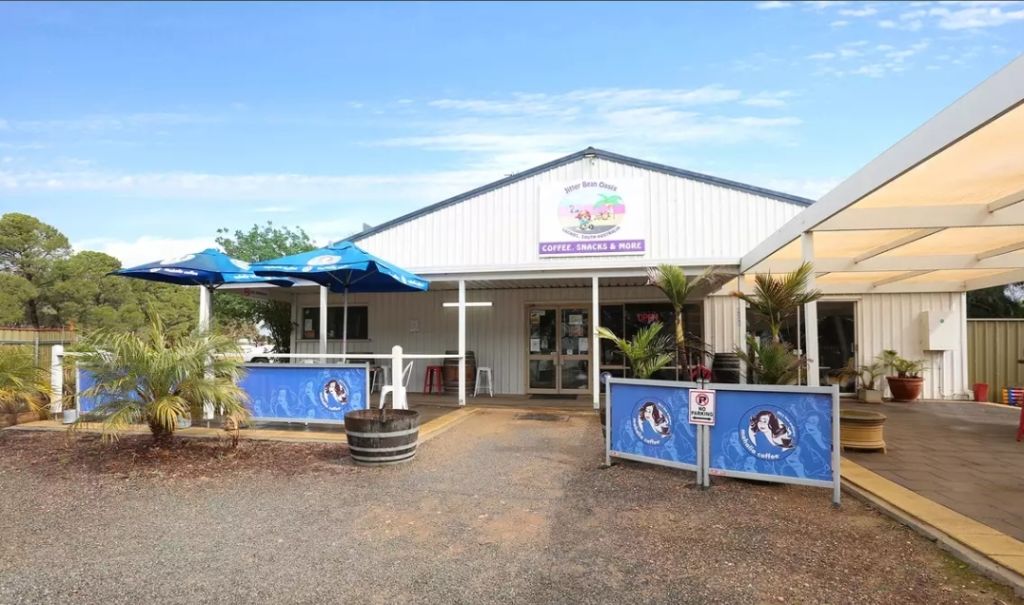
Myhre and James gave up city life in Melbourne to run a mobile coffee van for six years before settling in Lochiel and buying the cafe in 2013.
“It was really a rusted shed and it was pretty bad, and people thought we were stupid,” recalled Myre.
“Most people around here said, ‘You’re an idiot, look how much work you’ve got to do’ and ‘Look where it is, there’s nothing happening here’.
“We thought, ‘No, we can do something here’, so we just persisted. Lots of hours and money spent.
“We got a builder, but did a lot of work ourselves. Put verandahs out the front, got it all insulated, put on 56 solar panels and installed airconditioning.
“So, many people come and say they’re just going to stay for a quick coffee and they end up staying for much longer.”
The cafe specialises in coffee, of course, but also home-made take-away meals such as lasagnes and frittatas. Myhre and James are now looking to sell the Jitter Bean as they head into retirement.
What’s life like?
The pace of life in Lochiel has been slow, but increasing numbers of tourists could see that change in the future.
“The funny thing is, it’s crept up on us,” said Mim Ward, Clare Valley regional tourism manager.
“For years, you’d travel up to Port Augusta and drive through Lochiel, and the pink lake would be there and you’d just keep on driving and not think about it.
“But in the last few years, it’s become a tourism destination and a lot of that has been started off by the eastern market. People love to come up and they will spend hours out on the lake, taking the right selfie, the right Instagram moment.”
To accommodate the influx, Wakefield Regional Council and the federal government has spent $500,000 on a new car park, a boardwalk, foot wash bays (the lake is notoriously muddy), public toilets, picnic facilities and improved signage.
The lake’s bubblegum colours have been used as backdrops for advertisements, R.M Williams, Mercedes-Benz and Foxtel among them, fashion shoots for the Adelaide Fashion Festival and television shows, including Tim Minchin series Upright.
A new attraction for tourists is the Pink Lake Tiny House, which was built directly across from Lake Bumbunga in July 2020.
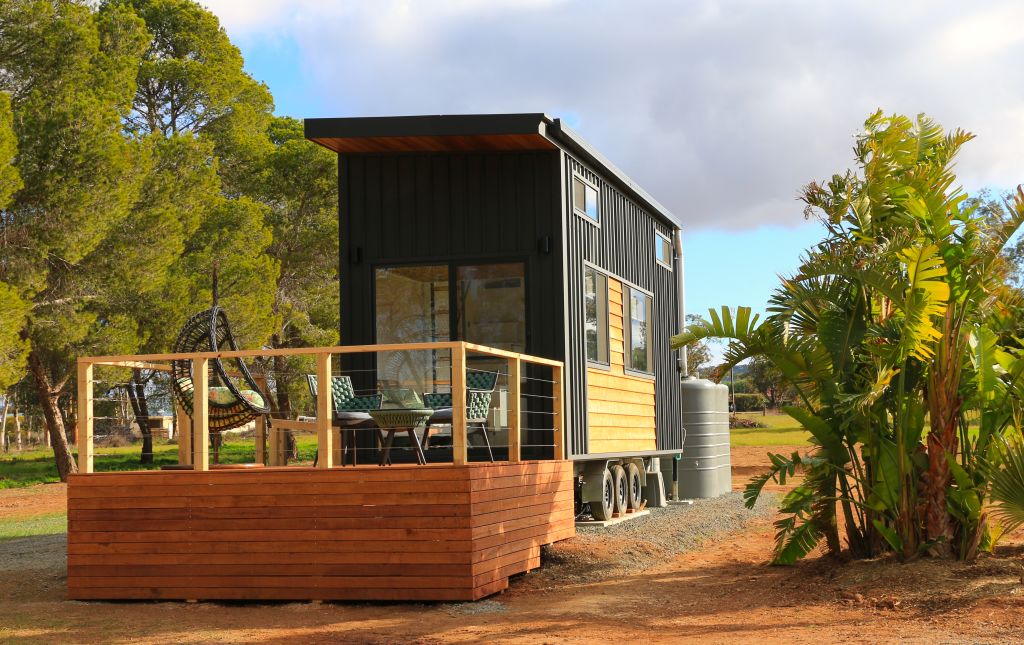
Owners Michael and Christina Seeliger thought the pink lake was the perfect place for the tiny house after seeing how many people were visiting Lochiel with nowhere to stay overnight.
“Most people drive up on a day trip from Adelaide and miss out on the stunning sunsets and sunrise views of the lake,” Michael said.
In addition to the tiny house craze, the accommodation is also popular for it’s eco-friendly features. Run totally off-grid, the house generates electricity from solar panels, collects rainwater in a tank and the toilet is bio-composting.
What jobs are there?
Farming is the main employer of Lochiel’s residents. Grain-sheep or grain-beef cattle farming employs 22 per cent, followed by other grain farming at 15 per cent, according to the 2016 census.
Why should you move there?
If sunsets and sunrises over the pink waters of Lake Bumbunga aren’t enough to entice you, there’s always the proximity of Lochiel to the vineyards of Clare Valley. Adelaide is just an hour and 40 minutes drive south, Port Hughes a 40-minute drive west and Port Pirie an hour’s drive north.
All of this from a quiet country town, or as Vicki Myhre puts it: “You’ve got access to everything, but not somebody on your doorstep.”
We thought you might like
States
Capital Cities
Capital Cities - Rentals
Popular Areas
Allhomes
More
